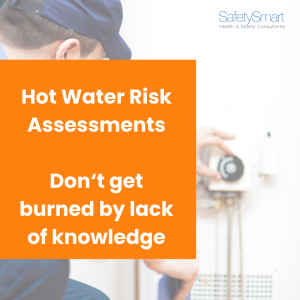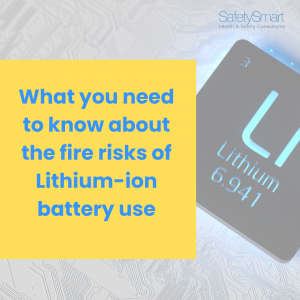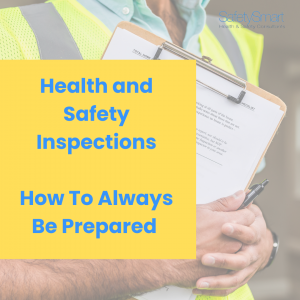Grenfell Tower: What needs to happen next….?
27th June 2017 Posted in Blogs

Grenfell Tower:
The Tragedy has Highlighted a Number of Extensive Potential Safety Risks in all High Rise Buildings in the UK– what should happen now, imminently….
Summary
• The government and local authorities must now ensure that all other tower blocks in the UK are safe in the wake of the tragic loss of life at Grenfell Tower.
• This article considers whether an inquest or an inquiry would be more beneficial in identifying the underlying as well as the obvious causes of the accident.
• The article also looks at the various parties and contractors who were involved in the £10 million recent refurbishment of Grenfell Tower, what their various roles were and whether they may face criminal investigation for corporate manslaughter.
Background
• Grenfell Tower was built in 1974 and consisted of 120 flats on 24 floors. A £10million refurbishment of the block took place in 2015/16 and the bottom four floors were extensively changed.
• Fire swept through the 24-storey block in North Kensington, west London, shortly before 01:00 am on 13 June.
• Seventy-nine people are either dead or missing presumed dead after the fire at Grenfell Tower according to the Metropolitan (Met) Police.
• Shortly after the fire, Cdr Cundy said his priority was to identify the people who died in the building and to remove them as quickly as possible. But he warned that not everyone would be identifiable and the operation would take “many, many weeks”.
Potential Causes of the Fire
It will be many months before investigations into the cause of the fire that consumed the tower block in north Kensington will be completed. It has been extensively reported that allegations were being made that the refurbishment of the residential building may have compromised the fire integrity of the structure. It is essential to understand exactly why the fire spread so quickly. There have been wide spread suggestions that new cladding fitted during the overhaul could have been to blame.
Immediate National Cladding Review
There are plans in place to test the fire resistance of cladding on up to 600 buildings following the Grenfell Tower fire. The government has since the tragedy disclosed that cladding on 60 high-rise buildings across 25 local authority areas in England have so far failed fire safety tests. Cladding is to be removed from 9 tower blocks in Salford.
Chalcots Estate in Camden was refurbished between 2006 and 2009 by the same firm, Rydon, who oversaw work at Grenfell Tower in 2015-16. Camden Council is in the process of refurbishing the estate to ensure that the unsafe cladding is removed.
Speaking on BBC Radio 4, Lord Kerslake, the former head of the civil service and now the Chair of the Peabody Housing Association in London, called for the testing process to be expedited:
“This is clearly a terrible national disaster and demands a national response. As well as the public inquiry on the lessons learned we need to establish where the areas of the highest risk are and take action immediately. That’s been a priority for me.”
Possible Areas of Concern for Inquiry
Rydon Construction, who carried out the work, is reported to have said that it “met all required building control, fire regulation and health and safety standards.” The Police are currently investigating all parties responsible for the work to identify who was at fault and whether any corporate entities will face charges of corporate manslaughter.
Also under scrutiny is the advice that was given to tenants that they were safer if they stayed in their accommodation rather than to try and leave. The inquiry must consider whether this advice was correct, given that so many of the deceased perished whilst waiting to be saved.
A resident’s action group has also claimed that fire safety equipment went untested and extinguishers that had been condemned were not replaced. The inquiry will no doubt consider whether this was correct.
Following the refurbishment work, London Fire Brigade gave the tower block a ‘medium’ fire risk rating, but the resident’s group continued to make claims about fire safety worries which may challenge whether this rating was actually correct.
Various Contractors
Concerns about the oversight and accountability of multiple contractors who refurbished the Tower have been raised by many on the £10m project that took place 2015-16. Criticisms of the project have focused on the disbelief that despite the expensive refurbishment, the work involved mainly improving the look of the building, due to complaints from other private residents who described the building as ugly. This is despite long running complaints and justified concerns about the lack of sprinklers and other fire safety equipment to improve the fire safety of the building.
The Kensington and Chelsea Tenants Management Organisation (KCTMO) hired the construction firm Rydon as the lead contractor on the project. The project involved the re-cladding the building with material that commentators allege could have been a factor in the fire’s rapid spread.
Factors also considered to have potentially contributed to failings in the refurbishment are reduced council oversight due to privatization and disparate build teams.
At least eight other contractors and sub-contractors were involved in separate elements of the refurbishment and materials used for the work.
Reynobond PE, an aluminum panel used in the Grenfell Tower cladding, was designed by the multinational firm Arconic, formerly part of the multinational metals group Alcoa. Arconic also makes a less flammable version of the product called Reynobond FR, which stands for “fire resistant”. It appears that Omnis Exteriors was asked to supply cladding £2 cheaper a square metre than a fire resistant type.
In the UK it is shocking to note that there are no regulations requiring the use of fire-retardant material in cladding used on the exterior of tower blocks and schools.
Government Response
The government has said that there is a criminal investigation underway and that there will be an inquiry into the tragedy. This indication means that the police, Crown Prosecution Service and Health and Safety Executive (HSE) are holding a joint investigation to consider whether criminal offences have been committed, namely corporate manslaughter and gross negligence manslaughter. The HSE will also consider whether there have been breaches of health and safety legislation by all parties who have been involved in the refurbishment and also whether prior to the refurbishment, the building was sufficiently safe to comply with fire safety requirements.
In terms of the exact focus of the investigation, the Chancellor Philip Hammond told the BBC’s Andrew Marr Show on Sunday 18th June that a criminal investigation would specifically examine whether building regulations had been breached when the block was refurbished. Commander Cundy, the police officer in charge of the criminal investigation, said that the criminal investigation was looking at;
‘how the building was managed and maintained, fire safety measures in the building, the construction and the refurbishment.’
He suggested that Kensington and Chelsea Tenants Management Organisation, which ran the block on behalf of the council, the contractors Rydon and cladding company Harley Facades Ltd could all face criminal allegations.
Possible contributory factors include issues that were raised before the fire by the residents, who complained about power surges and blocked emergency exits at the tower. So it appears that the issues that an inquiry may have to consider are much wider than the cladding which is the main focus presently.
Matt Wrack, General Secretary of the Fire Brigades Union, also wrote to Theresa May calling for a full, judge led inquiry into the fire and called for the scope of the investigation to include building control, planning and fire safety decisions made by ministers.
“All of these have seen significant changes in the recent past as part of an agenda of de-regulation and cutting so-called red tape,” he said. “Those who took those decisions are going to have to start facing the consequences.”
Scope of the Inquiry
Many critics have however rightly commented that the terms of reference of the inquiry must only be set with the co-operation of the families of the survivors and deceased who must have publically funded legal representation. Safety Smart would agree with this, so as to ensure that the inquiry’s remit is not limited and ineffective as so many public inquiries have been in the past.
The Mayor of London Sadiq Khan commented that the fire was entirely preventable and that the causes of it were due to “years of neglect.” He claimed that the local council and successive governments were responsible for the tragedy. Hopefully, the inquiry will identify whether the Mayor’s comments are correct.
Why We Need an Inquiry Not an Inquest
There has been some confusion and disagreement about what the formal response should be to ensure that we gain a proper understanding of what factors contributed to the tragedy.
In order to promptly identify all possible fire safety risks in UK tower blocks, it is necessary to expedite the opening of the public inquiry to give some confidence to the families of the victims and survivors that the government does want to identify the causes of the accident and hold those responsible to account.
Criminal investigations into possible corporate manslaughter offences and health and safety investigations by the fire service and the Health and Safety Executive can and unfortunately do take years, due to the extensive number of parties involved and the voluminous amount of paperwork that the investigation will have to consider before making a decision regarding who is responsible for the corporate manslaughter of the 79 people (to date) at Grenfell Tower.
There has been some mention in the press of the Lakanal House fire which occurred in July 2009 in Camberwell, London, in which six people died. In that case there was a criminal investigation which took several years which meant that there was no inquiry as by the time the criminal investigation was completed, it was decided that it would be more appropriate for an inquest to take place. The result of the delay was to make the families of the deceased suffer far longer than was actually necessary, so we must learn from this past mistake.
A coroner will not usually proceed with the substantive part of an inquest until any criminal investigation has concluded. But a public inquiry is not limited in the same way. Also, the scope of a public inquiry can be much wider as public inquires are less prescriptive. Therefore, as a public inquiry can be expedited, in this case, it is a more favourable option than an inquest. The most urgent issue is to know what went wrong and put it right elsewhere. If necessary, that could mean retrofitting sprinkler systems in all old tower blocks.
The inquiry can take place whilst the criminal investigation is ongoing and will not hamper the process. Indeed, it may actually assist, as information could come to light which will increase the likelihood of a successful prosecution of those responsible.
An inquiry would have the benefit of trying to restore public confidence that any buildings with cladding or equally unsafe parts to its composition are identified and rectified. An inquiry will also provide the public and bereaved families with a an expedited, transparent opportunity to understand why the fire happened and also to hold those who are responsible to account.
Unfortunately, an inquest and a public inquiry can only make recommendations, not ensure legally binding requirements, but a rapid public inquiry would put the government under more pressure to implement its findings, especially given the current public mood of disbelief that in 2017 a tragedy of this kind could occur.
Conclusion
• It is extremely worrying that of all the local authority buildings that have had had their cladding tested since the Grenfell tragedy, not one appears to be legally compliant. This discovery makes the need for a thorough and extensive inquiry into the causes of the tragedy even more necessary.
• A number of commentators and fire safety experts have said that it is unthinkable that a tragedy of this nature can occur in 2017 in London, particularly of the scale involved. It appears that a greater emphasis was placed on the need for the “ugly” building to appear more attractive than to ensure that basic fire safety requirements were met, such as the installation of sprinkler systems and a basic check that the cladding was safe and fire resistant, despite the extensive parties involved in this refurbishment.
• The criminal investigation has to ensure that those parties who failed the residents by their negligence are prosecuted for corporate manslaughter and related health and safety offences. However, sadly, the families of loved ones who died in this disaster will have to wait a considerable amount of time before a decision is made in this regard.
• Therefore, it is essential that whilst we are waiting for the complicated decision to be made regarding criminal prosecutions, the inquiry is expedited. The scope must be sufficiently wide to ensure that all potential contributing factors have been thoroughly explored. Finally, the families of the deceased must all be represented through public funding, so that they are satisfied that they understand why their loved ones died so needlessly.
Resource Hub

Smart Resource: Hot Water Risk Assessments

Smart Resource: What you need to know about the fire risks of Lithium-ion battery use

Smart Resource: How to always be prepared for H&S Inspections

Smart Resource: UK School Closures What you need to know
Request A Call!
Want a free no-obligation consultation? Fill in the form below and we'll give you a call!